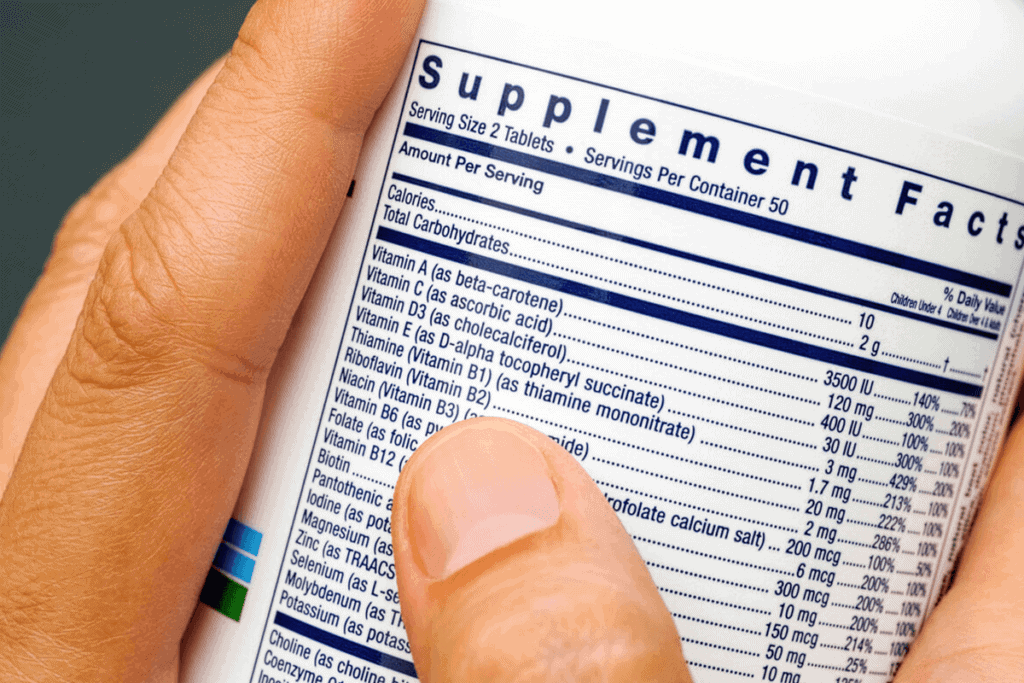It’s no secret that kids need their vitamins and minerals. But it can be hard for a parent to know exactly which nutrients their child needs for optimal growth and development. While healthy meals are the best source of necessary micronutrients, too often kids don’t get what they need from food alone. (2) When advised by a healthcare practitioner, a multivitamin containing key essential nutrients can help your child easily meet their nutritional requirements.
Find the best supplements for children on Fullscript

Did you know? Seven out of ten children aged four to eight years fail to meet the minimum number of servings for vegetables and fruit. These children also fall short of reaching the recommended servings for grains and milk products. (2)

Supplements for Children
In a perfect world, children would get all the nutrients they need from a diet filled with fresh, wholesome foods. Yet, hectic family schedules and reliance on ultra-processed food low in important nutrients can leave kids overfed and undernourished. (5) Not only do these nutritional deficiencies undermine a child’s healthy development, but they can also increase the risk of a variety of health conditions as they grow into adulthood. (16) Although supplements can’t make up for a nutritionally bankrupt diet low in fruits and vegetables, they can provide some protection if:
- They aren’t eating regular well-balanced meals made from fresh, nutrient-rich fruits and vegetables, high-quality protein, dairy products, and whole grains.
- Their diet is primarily based on fast food, convenience food, or ultra-processed snack food. (5)
- They drink a lot of sugary beverages. (10)
- They are picky eaters. (46)
- They eat a vegetarian, vegan, or other special diet that restricts the intake of certain foods. (25)(41)
Did you know? A National Health and Nutrition Examination Survey found that children with diets high in added sugars had lower dietary intakes of several micronutrients, especially vitamins A, C, and E, as well as magnesium. (30)

6 Best Supplements for Children
A daily multivitamin/mineral supplement can help parents make sure their children are getting at least the basic nutrients they need. Check the supplement facts label on the bottle for the following essential vitamins and minerals. (12)
1. Calcium
Calcium is critical for the development of strong bones and teeth. Yet many kids don’t get adequate amounts. According to the National Health and Nutrition Examination Survey (NHANES), only 39% of boys and 53% of girls ages 6 to 11 get the recommended amount of calcium daily. (15) However, research in the New England Journal of Medicine notes that children who take supplemental calcium experience an enhanced rate of increased bone mineral density compared to those who don’t supplement. (21)
2. Iron
Iron is essential to the production of red blood cells and for building muscles. It is also necessary for physical growth, neurological development, and the synthesis of some hormones. (37)
An iron deficiency can be quite common in both infants and teens, especially among girls once they begin to menstruate. Iron deficiency is also responsible for about half of all childhood cases of anemia. (27) However, studies show that supplementing can reduce the risk of anemia by 50% and the risk of an iron deficiency by 79%. (28)
3. Magnesium
Magnesium is a cofactor in more than 300 enzymatic reactions throughout the body. It helps to regulate muscle and nerve function, blood sugar, and blood pressure. (38) Magnesium may also be just as important as calcium for a child’s bone health.
In one study of 63 children, researchers found that the amount of magnesium that was consumed and absorbed was directly linked to bone mass in children. (1) Other studies suggest that supplementing with magnesium reduces hyperactivity in children with attention deficit hyperactivity disorder (ADHD) by helping to calm neuronal excitability. This, in turn, may help with learning and memory. (35)

4. Omega-3 Fatty Acids
Unless your child eats fatty fish like salmon regularly, they may benefit from an omega-3 fatty acid supplement. These healthy fats are vital for brain development. While 70% of a child’s brain is developed at birth, the remaining 30% grows during infancy and young childhood. (42)
Studies suggest that the omega-3s in fish—especially docosahexaenoic acid (DHA)—can improve brain function and mood in children. (9)(45) Other research suggests that adequate blood levels of omega-3s may promote better sleep, reduce the risk of developing asthma, and improve attention, learning, and impulse control in kids with ADHD. (8)(34)(49)
5. Vitamin D
Vitamin D helps your child’s body absorb calcium, improves immunity, and plays an important role in healthy brain development. (47) Despite its importance to good health, many children aren’t getting enough of this critical nutrient.
Kids living in northern climates or who are exclusively breastfed are often deficient. (7)(29) Low levels of vitamin D can stunt growth and, in extreme cases, increase the risk of rickets, the softening and weakening of bones in children. (4) While the recommended dose is 400 to 600 IU of vitamin D3 for children daily, many doctors and researchers believe that higher amounts are needed. (39) Work with your child’s healthcare provider for an appropriate dose depending on your child’s age and health status.
6. Zinc
This important mineral plays a key role in cell growth and differentiation, as well as metabolism. It’s also crucial for a strong immune system. (48) But perhaps zinc’s most important benefit is its ability to foster healthy growth. A review of 36 studies found that supplementing with zinc daily improved a child’s ability to grow taller compared to children who didn’t supplement. (19) Just be aware that high doses (more than 20 mg daily) may, over time, cause a copper deficiency. (11)(24)
Supplements for Children for Special Situations
Making sure your child gets the necessary vitamins and minerals can give them the nutritional edge they need for optimal health. But sometimes kids need more than just the basics. Here are three common health concerns in children, along with supplements that may help parents manage each scenario.
1. Chamomile for Anxiety
From jam-packed schedules to mountains of homework, kids today are under an increasing amount of stress that can leave them feeling anxious. According to one survey in the Journal of Developmental & Behavioral Pediatrics, two million American children are currently dealing with a diagnosis of anxiety. The study authors estimate that another 20% of all children may have undiagnosed or untreated anxiety that can lead to school problems and behavioral issues. (3)

Along with employing stress-relieving remedies like meditation, research shows that chamomile is a safe and effective way to balance cortisol levels and reduce the symptoms of anxiety. (22) According to research in the journal Pediatrics in Review, chamomile is well tolerated in children unless they happen to be allergic to the herb. (13) Chamomile is commonly available as a tea, tincture, or chewable supplement.
2. Probiotics for Digestive Problems
Digestive issues are a common concern for many children. Whether it’s colic, upset stomach, constipation, or a bout of diarrhea, everyday digestive problems may be helped with the addition of a probiotic supplement.
Researchers at the University of North Carolina at Chapel Hill report that a formula containing one specific probiotic, Lactobacillus reuteri, can reduce the crying time in babies with colic. (23) Two other probiotic strains—Lactobacillus rhamnosus GG and Saccharomyces boulardii—have been found to soothe acute gastroenteritis, more commonly called the “stomach flu.” These strains are also effective against antibiotic-associated diarrhea. (17) A review of six studies also found that probiotics improve stool frequency in children with constipation. (18) Probiotics are available as drops for infants and in chewable or gummy form for older kids. Since the benefits of supplemental probiotics are strain-specific, it’s smart to consult your practitioner and then check the label for the strains that fit your child’s digestive needs.
3. Melatonin for Sleep
Bedtimes can be a battle for many parents. Poor sleep, or the inability to fall asleep easily, affects an estimated 75% of school-aged children (26) and can negatively impact both mood and school performance. (14)(33) Several clinical trials have found that supplementing with 5 mg of melatonin can help children fall asleep faster and sleep longer compared to a placebo. (20)(43)(44)
Melatonin is a hormone naturally produced by the body that regulates the sleep-wake cycle. Supplementation can help reset a child’s internal clock and improve the quantity and quality of sleep. In one study review involving more than 1,700 children, researchers found that melatonin significantly and safely improved sleep latency and duration, and reduced wakefulness during the night. (32) While there aren’t any studies on the safety of long-term use, the occasional use of melatonin appears to be safe in children over the age of five. (6)(36)
Did you know? Although chewable and gummy-based supplements are kid-friendly, they can contain undesirable additions including added sugars, sugar alcohols, and artificial colors. (40)
The Bottom Line: Supplements Can Help Ensure Your Child Is Healthy
Supplements can help ensure that a child gets all of the nutrients they need for good health and proper development. Your pediatrician can help you determine the appropriate dose for your child’s age, weight, and individual needs. When choosing a supplement, it’s also important to look for high-quality brands specifically formulated for kids.
Find the best supplements for children on Fullscript






